Part One • Part Two • Part Three • Part Four • Part Five • Part Six • Part Seven
At last, something easy with this series of articles looking at stock footage in Smashie and Nicey: the End of an Era. Surely Top of the Pops has been endlessly watched and documented by now. I’ll fly through this, won’t I?
No? Oh well.
End of an Era features material from six different editions of Top of the Pops, from title sequences through to actual performances. All but the last two clips can be seen in the following:
Note that I have conveniently decided to stop that video just before the pair’s “celebration” of “black music”. “You would not believe the complaints that show got…” Or, indeed, websites.
* * *
(18:58) Top of the Pops • BBC1 • TX: 15th October 1970
“Yes, it’s Number One, it’s Top of the Pops!” The famous title sequence from the show, albeit cut down from 44″ to 17″.1
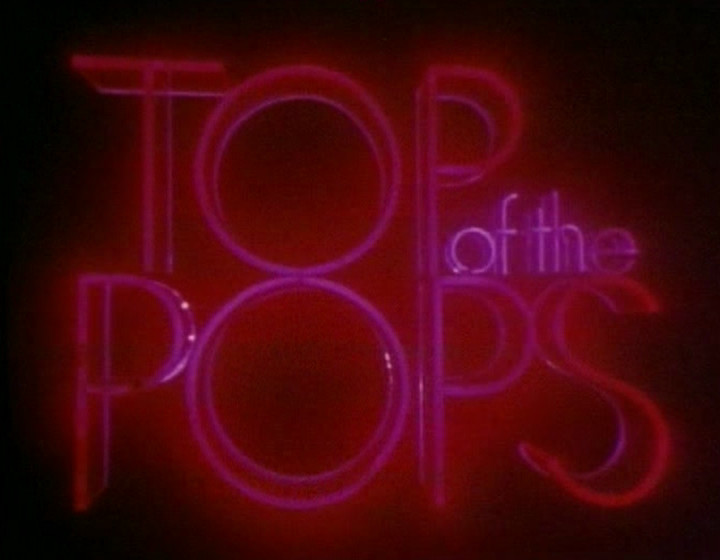
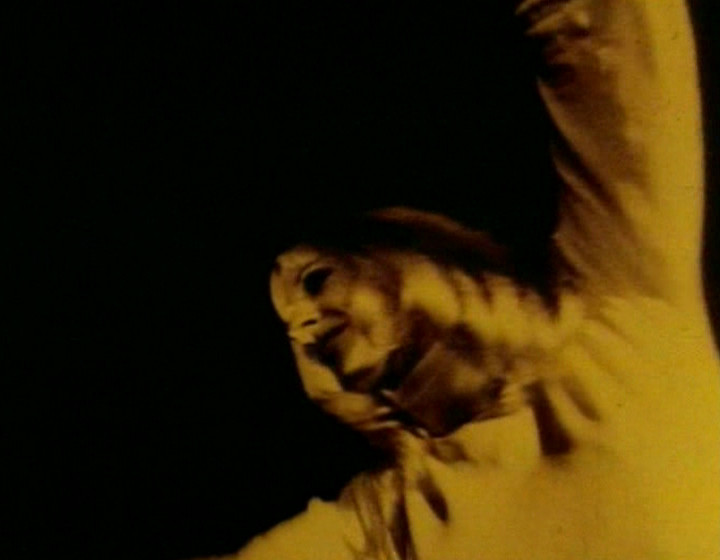
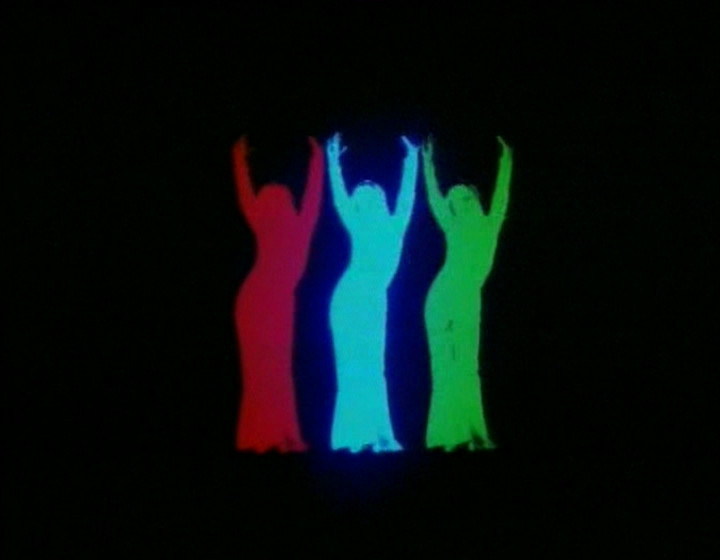
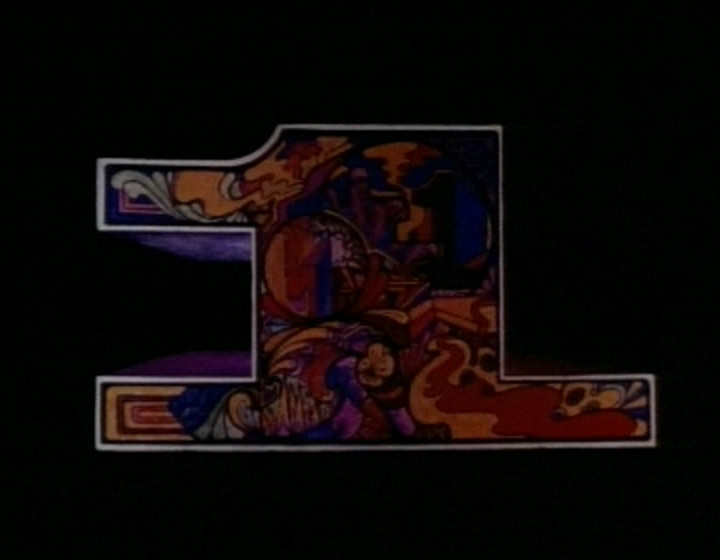
It’s worth pondering exactly why End of an Era chose this particular show to grab the title sequence from. The first colour edition of Top of the Pops was broadcast on 27th November 1969, but End of an Era was screwed over twice here. Firstly, most shows from this era have been wiped. Secondly, and the material which does still exist is now only in black and white. The one used here from 15th October 1970 is the first surviving complete colour edition of Top of the Pops, albeit with mute presenter links. For storytelling reasons if not historical ones, you wouldn’t want to use black and white footage for this section; Top of the Pops needs to have Smashie and Nicey come screaming into colour.
(19:28) Top of the Pops • BBC1 • TX: 27th December 1971
“Hush Rod!” Yes, Rod Stewart’s performance of Maggie May, perhaps most famous for John Peel “playing” the mandolin. There’s a wrinkle here, though. End of an Era took the material from a compilation of the year’s best performances, broadcast Christmas 1971. But when was the performance transmitted originally?
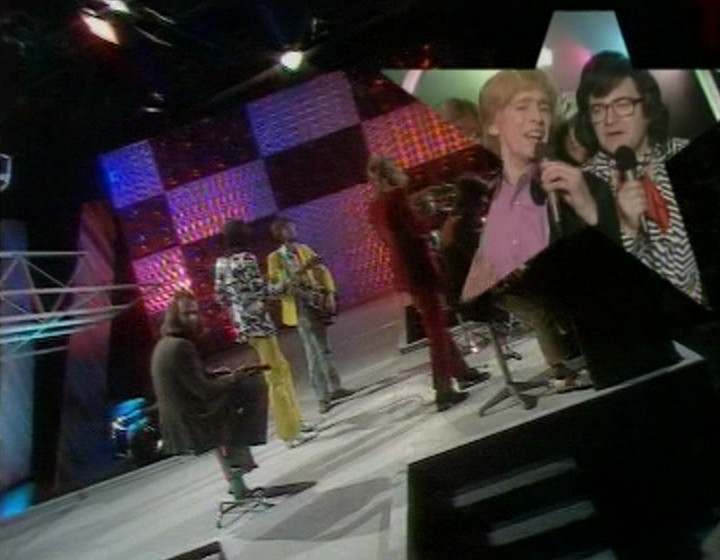
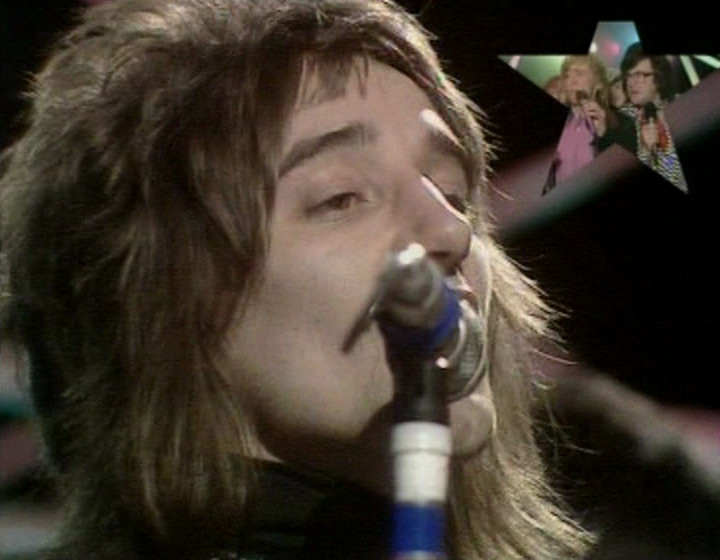
This is harder to find out than you might think, but checking Popscene, it seems there were only two performances of “Maggie May”2 on the show; one on the 19th August 1971, and the other on the 30th September 1971. It’s the latter performance which survives, with the earlier being wiped.3
Incidentally, that 30th September edition of Top of the Pops has also been wiped, which explains why End of an Era took the footage from the Christmas show; it was the only source available.
There’s one more thing worth noting in this sequence. Obviously, End of an Era had to build plenty of partial Top of the Pops-esque sets for Smashie and Nicey to do their links from. Note how they cleverly designed the set for the link into “Maggie May” to have a similar kind of fake scaffolding design as the actual archive performance:
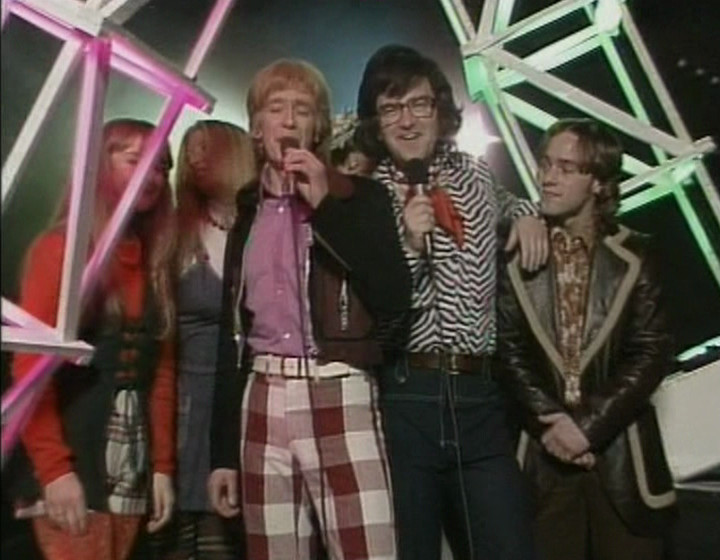
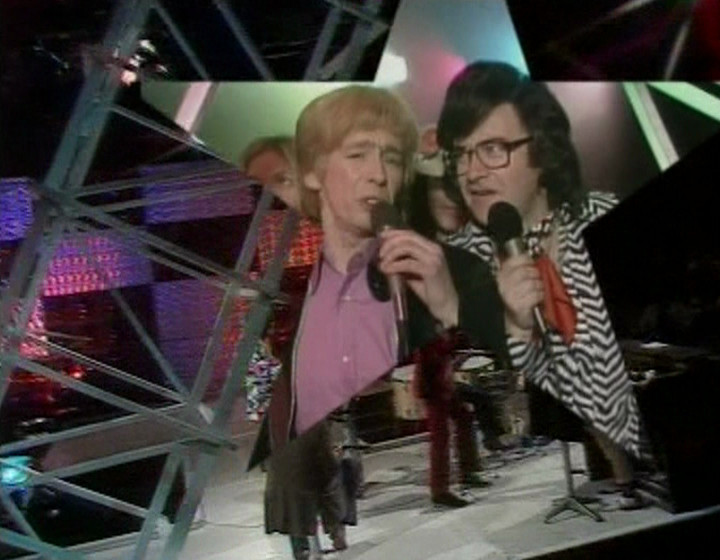
Every time you examine End of an Era more closely, the more impressive the care taken in it seems.4
(19:51) Top of the Pops • BBC1 • TX: 27th September 1973
Another famous title sequence, this time featuring “Whole Lotta Love” – again, cut down from 42″ to just 10″.5
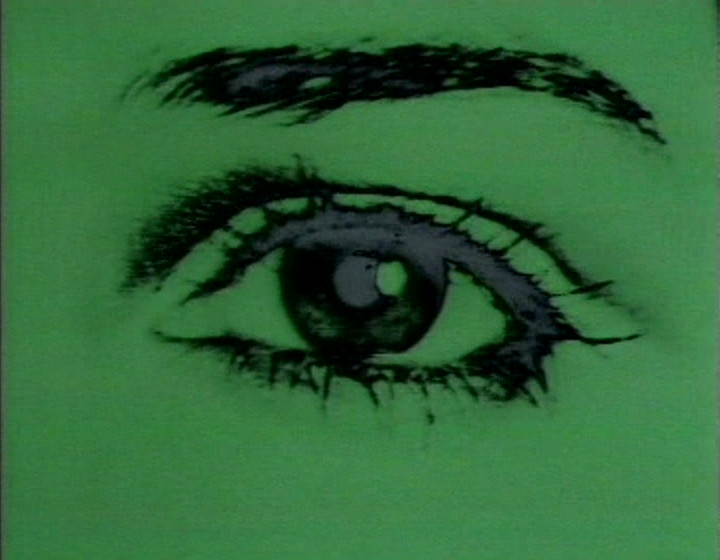
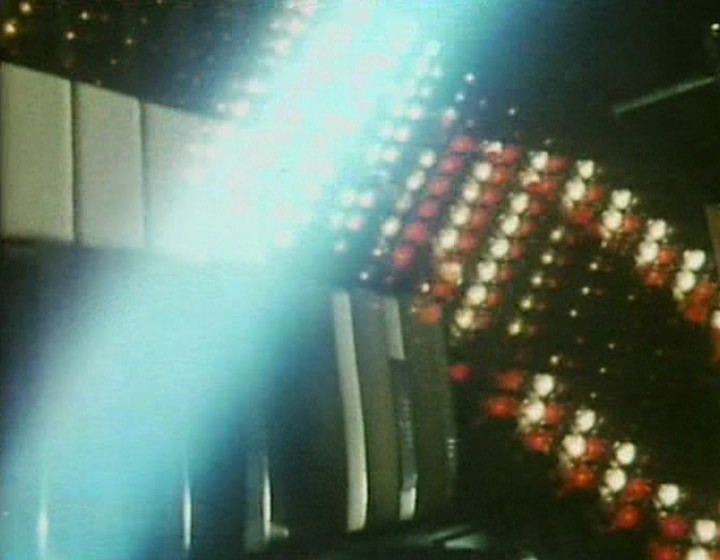
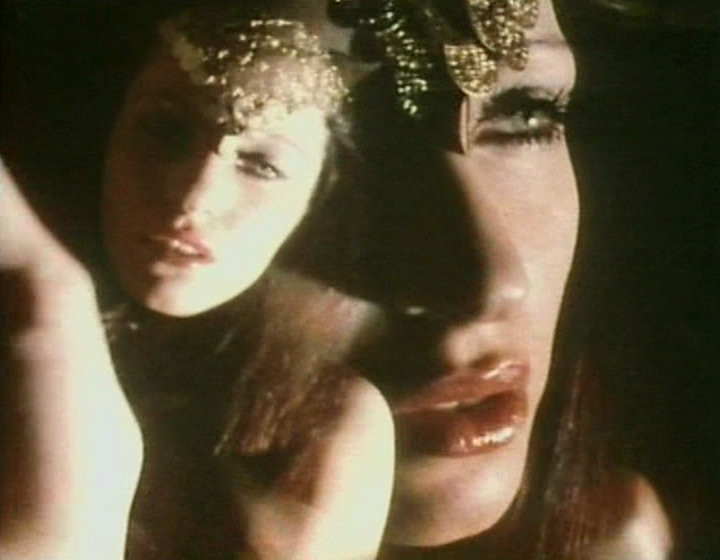
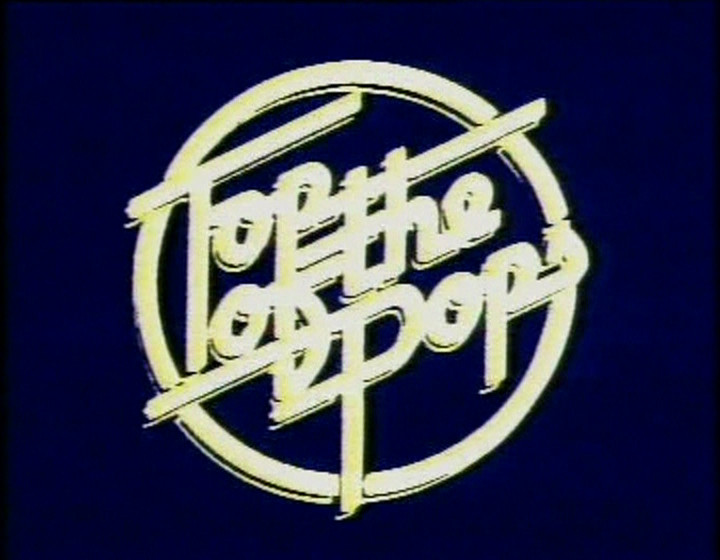
And yet here we run into a problem. Let’s watch the full opening to that 27th September 1973 edition, where those titles were supposedly taken from according to the production paperwork:
Hang on, the opening shot is different?!
Yes, End of an Era uses a green eye at the start of their version of the titles, which doesn’t appear in the September 1973 edition. Instead, that uses a shot of a woman:

End of an Era
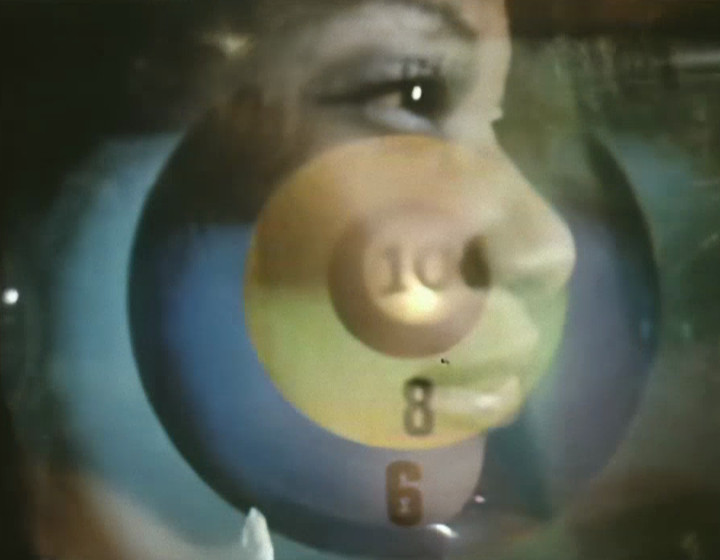
Top of the Pops 27/9/73
So where’s the green eye shot from? Answer: from an earlier incarnation of the “Whole Lotta Love” titles. Here’s an example from the 14th January 1971:
So End of an Era essentially did a cut-and-shut on the titles, and bolted the opening shot of the earlier titles onto the later titles… and then didn’t document it in the paperwork. In fact, it’s impossible to tell which edition End of an Era actually took the eye shot from; it’s present in multiple shows.
The big question is why they did it, and that’s a little tricky to work out. The obvious guess is that the team thought the green eye shot was striking, and wanted to use it. But note that the original shot features a black woman. Could it be that the team didn’t want her included, as it clashed with their joke about a “black music” edition later on? That’s pure speculation, of course, but I think it’s speculation worth pondering.
The green eye from the earlier titles and the Top of the Pops logo from the later titles are also used multiple times on their own in End of an Era to separate out the various Smashie and Nicey links. “Crikey, Nicey’s just read my mind…”
(22:11) Top of the Pops • BBC1 • TX: 29th April 1976
This one at least is straightforward enough. The clip of Brotherhood of Man singing “Save Your Kisses for Me” did indeed come from the 29th April 1976 edition of Top of the Pops. Although I have sat through multiple performances of the song from other editions of the show, just to check it was definitely this one, so BE GRATEFUL.
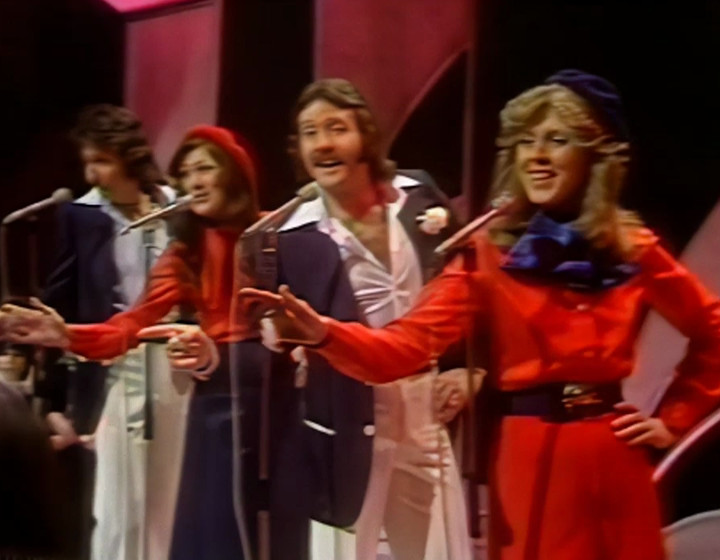
Top of the Pops 25/3/76
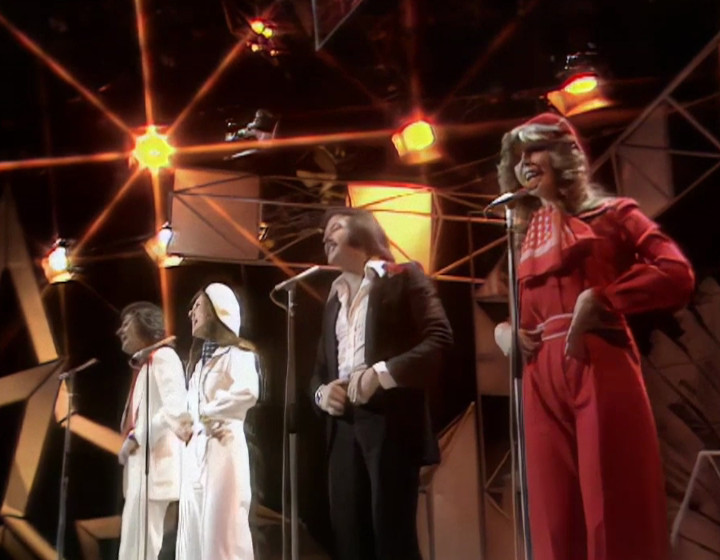
Top of the Pops 8/4/76
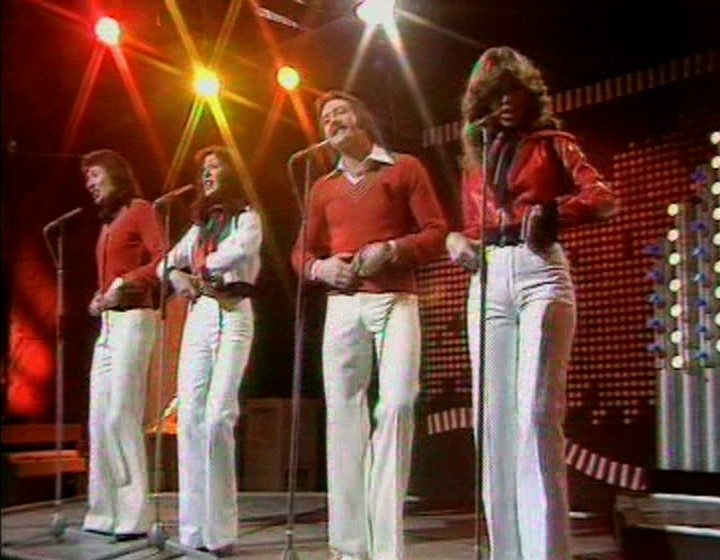
Top of the Pops 29/4/76 &
End of an Era

Top of the Pops 26/12/76
Not for the first time in these articles, I am starting to question my life choices.
(32:04) Top of the Pops • BBC1 • TX: 3rd January 1985
And finally, a slightly odd one. Yes, the music video for Band Aid’s “Do They Know It’s Christmas?” is actually taken from a showing on Top of the Pops, rather than sourcing the video directly from the record company. But it makes sense: it was surely just the easiest way for End of an Era to get a copy of it. The paperwork claims this was from the edition transmitted on the 3rd November 1985, but that’s clearly a typo; it must have been the 3rd January 1985, when the song was at Number 1.
And, of course, End of an Era had to add Smashie and Nicey into proceedings. The result is perhaps one of the less successful attempts at footage manipulation in the show, but the second shot in particular would have been a difficult one to achieve with the moving camera, and still impressive for 1994:
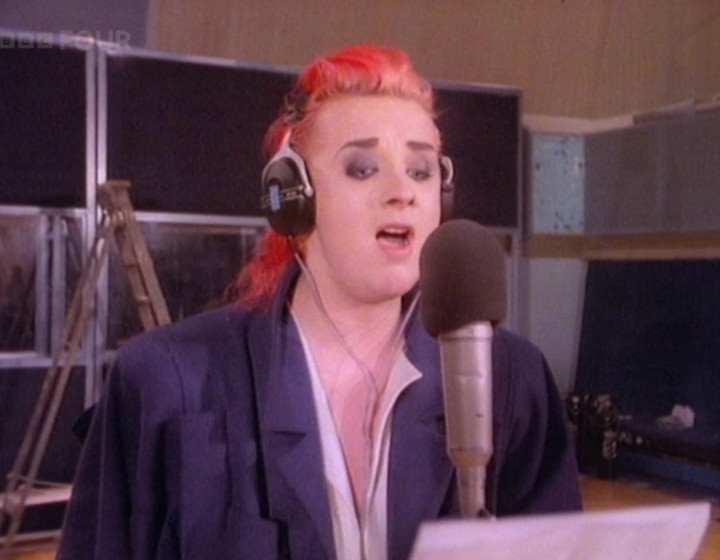
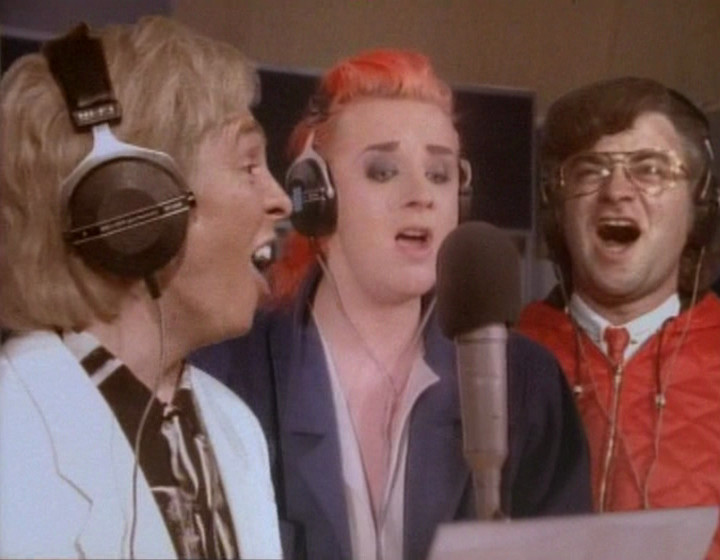
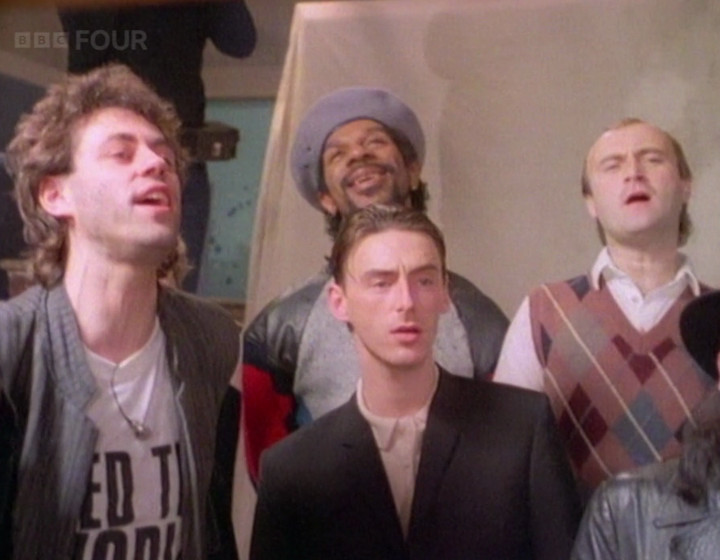
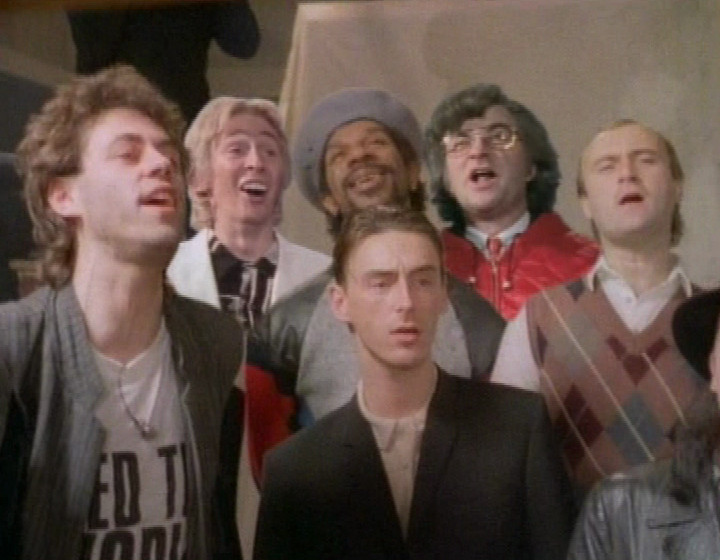
There are also a couple of shots of Smashie and Nicey fooling around with a replica set built behind them; a quick comparison with the Boy George shot will show how close they got. They even remembered the ladder!
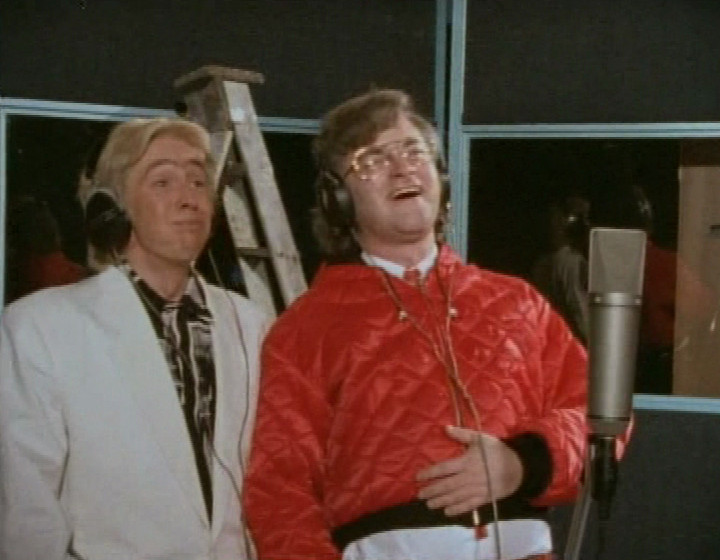

And that’s your lot for now. We are, believe it or not, inching towards this set of articles reaching some form of conclusion, so join me next time for the penultimate part…
With thanks to C. Paul Brown, David Brunt, David Gillespie-Pratt, James Masterton, and Darren Rigby-O’Neill for Top of the Pops fact-checking, Darrell Maclaine and Mike Scott for various bits of inspiration, Steve Williams for reminding me of the music edit in the commercial VHS, and Tanya Jones as my usual unpaid editor.
Incidentally, we still don’t know who wrote the music used in these titles. See my End of an Era music guide for more details. ↩
Excluding interpretations by Pan’s People. ↩
Here’s a question: does that star effect used in End of an Era feel like it’s out-of-time for 1971, and really should be a few years later? That’s what I thought, but David Gillespie-Pratt pointed out that the 1971 TOTP performance of “Get It On” uses similar star effects, and that’s good enough for me. If they couldn’t do shrinking stars, well, that’s easily justifiable under comedic licence. ↩
It has not escaped my attention that I made a very similar point about metal frameworks/scaffolding in this 2020 post. I am brilliant, and by brilliant, I mean tedious. ↩
The VHS edit of End of an Era couldn’t clear “Whole Lotta Love”, so just uses the previous theme instead. See this article for more on the differences between the broadcast and commercial releases. ↩

5 comments
John J. Hoare on 12 July 2024 @ 6am
(And yes, I know I’m technically on a summer hiatus here, but I kinda realised it was stupid to hold back this ongoing series of articles because of it, when I’m so close to the finish line.)
Martin Fenton on 12 July 2024 @ 2pm
Probably the same scaffolding! John Birt hadn’t quite got his scythe into the props department yet.
Steve Williams on 12 July 2024 @ 6pm
This is quite a mundane observation (but if I can’t make it here, I can’t make it anywhere) but one thing I really like in the Rod Stewart bit is that one of the other acts they mention coming up is Ashton Gardner and Dyke, who actually were on that same Christmas episode. I think it’s really great that they mentioned them rather than a more obvious seventies act, further illustrating the attention to detail included.
I really love the whole Pops sequence, though as I’m more familiar with the VHS because I watched it ten trillion times so I’m more used to it with the other theme. I really love how they keep on changing their appearance with sundry moustaches and perms and so on, for scenes that are on screen for all of ten seconds each.
It would be fascinating to hear Harry and Paul talk about this show, I get the feeling Paul is not especially interested in analysing his work but I’d love to know the kind of stuff they did watch while they were writing it. Reminds me of Peter Serafinowicz and Robert Popper talking about watching Election 79 while writing Look Around You.
John J. Hoare on 12 July 2024 @ 8pm
Martin: I’m now carefully examining the widths of different scaffolding struts, and I blame you.
Steve: I *never* noticed the Ashton, Gardner and Dyke thing! Amazing.
I was at that Norbert Smith viewing a few years ago where Enfield was interviewed, and let’s just say that as soon as End of an Era was brought up, Harry froze up immediately. Did he freeze because he really just wanted to talk about the under-appreciated Norbert Smith, or because he DIDN’T want to talk about End of an Era? Who knows.
Nathan on 29 July 2024 @ 11am
It’s a shame he didn’t wanna talk about it, it’s his best work IMO.
Comments on this post are now closed.